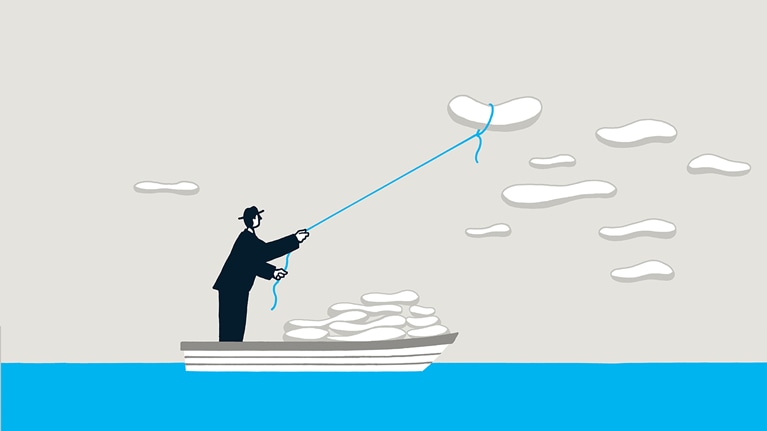Past McKinsey research has found that companies completing many small deals regularly over time create more value than those completing the occasional large transaction.1 But what do these companies, which we call programmatic acquirers, actually do that differentiates them from the rest of the pack?
The latest McKinsey Global Survey on M&A practices,2 which covers a period of deal making amid dramatic market shifts and economic disruptions, finds that respondents who work for programmatic acquirers are more likely to report the use of specific practices in all four stages of M&A: strategic sourcing, deal execution, integration, and the M&A operating model. For example, they reallocate M&A capital to the most strategic business units, have defined processes and criteria for due diligence, and align top teams ahead of an integration. Furthermore, respondents predict that the pace of M&A will increase in the years ahead, underlining the role that these practices will play in value creation.
M&A continues apace
The survey results reflect the prevalence of M&A in recent years and demonstrate expectations of vigorous activity in the future. Forty-four percent of respondents predict that their companies will close more deals over the next five years than they completed over the previous five—more than three times the share (13 percent) saying they expect to close fewer deals.
Asked about the purpose of that M&A activity, respondents expect the reasons for future M&A activity will be consistent with that of years past. They most often say their companies pursued M&A in the past five years—and will do so in the coming years—to expand their product or service offerings and to acquire new intellectual property or knowledge capabilities. For both the past and future, smaller shares say the purpose has been or will be to realize economies of scale or to vertically integrate within their industries.
Would you like to learn more about our M&A Practice?
Given our prior research identifying programmatic acquirers as having the greatest success with M&A, we are particularly interested in their practices compared with those of other companies.3 According to respondents at programmatic acquirers, their companies are more likely than others to use several key practices at each stage of the M&A process.
What programmatic acquirers do differently
The survey asked about the four main stages of M&A: strategic sourcing, deal execution, integration, and the M&A operating model. In each one, respondents at programmatic acquirers demonstrate more pervasive application of specific practices than their peers at other companies.4
In M&A strategy and sourcing, respondents at programmatic acquirers are more likely than others to strongly agree that their companies take measures to align M&A strategy with corporate strategy. In particular, the programmatic acquirers are 1.7 times more likely than their counterparts to reallocate M&A capital regularly to the business units that align most with the overall strategy (Exhibit 1). They are also 1.5 times more likely to say they know which assets to buy and sell to realize the company’s M&A aspirations. Including divestitures as well as investments in M&A conversations allows companies to shape their portfolios more proactively.

During due diligence and deal execution, the programmatic acquirers again are more likely to have defined processes in place to make go/no-go decisions at each stage of a deal (Exhibit 2). Respondents at these companies are 1.3 times more likely than others to strongly agree that they have such criteria for making a nonbinding offer, and 1.4 times more likely to have criteria for reaching a binding offer.

Similarly, programmatic acquirers tend to gather information about revenue and cost synergies at several points in the M&A process (Exhibit 3). Even early in the deal process—when screening potential targets, for example—respondents from programmatic acquirers are more likely than others to say they estimate their synergies, which can give companies a head start on planning for integration.

What’s more, respondents from programmatic acquirers say their companies dedicate more time aligning people, getting buy-in, and developing measurements for the new companies’ vision during the integration process. For example, 29 percent of them strongly agree that they spend enough time building trust among the new company’s leadership team; only 19 percent of other respondents say the same. Bringing leaders together serves multiple purposes, not the least of which is enabling the leadership team to focus on communication, which the programmatic acquirers also do more often than their peers. Respondents at these companies are 1.7 times more likely than others to say they spend enough time effectively cascading key messages throughout their organizations, which enables buy-in and understanding at all levels. Respondents from programmatic acquirers also are 1.3 times more likely than others to say they develop key performance indicators that reflect the new companies’ vision (Exhibit 4).

Finally, when it comes to the M&A operating model, programmatic acquirers tend to develop ongoing internal structures and processes for M&A rather than treating it as a one-off project. One way respondents from these companies indicate that they do so is by establishing clear ownership for each phase of M&A (Exhibit 5), with the owners being dedicated operational or functional professionals whose job descriptions include M&A responsibilities.

Another way the programmatic acquirers take a systematic approach to M&A is the codification of knowledge gained from previous M&A pursuits. Respondents at programmatic acquirers are more likely than others to report the use of playbooks in each phase of the deal process (Exhibit 6), which helps ensure that best practices are passed along and well defined for future deals.

Looking ahead
The survey results shed light on the practices that companies with a programmatic approach to M&A—which is one of five moves companies can make to increase their odds of strategic success—employ that can lead to value creation.5 For companies that do not take a programmatic approach to M&A but aspire to improve their relative success with M&A, it can be hard to change course to build that expertise. One way to start is by continually enhancing M&A capabilities, as companies would in other strategic and operational areas, on a few key fronts:

McKinsey’s original survey research
- Rethink resource allocation. The reallocation of M&A capital to strategic business units is, according to the results, one of the areas where the programmatic acquirers differentiate themselves most from other companies. The effective reallocation of resources requires a centralized, dynamic process for evaluating prospective deals, regular reviews of allocation decisions, and the ability to adapt allocations when more information strengthens—or weakens—the company’s earlier assumptions. Other McKinsey research on investment and decision-making practices shows that companies that actively reallocate resources are simultaneously rigorous and flexible, and they offer managers incentives to move critical resources when and where they’re needed. Rigor and flexibility, coupled with these incentives, help cultivate a culture in which reallocation is business as usual.
- Upgrade the M&A infrastructure. As with any other corporate function, success in M&A requires defined responsibilities and decision rights. Without these, it is difficult, if not impossible, for companies to pursue the activities attributed to programmatic acquirers. At many companies, this is achieved through a central M&A team that has a mandate from the CEO to work directly with the strategy and corporate-finance functions to support execution and provide transparency throughout the entire deal-making process. This team also helps to ensure that individual business units work together—for example, that there are streamlined handoffs between the diligence and integration teams, so that early synergy findings inform later integration timelines and financial goals. For companies and industries with sufficient ongoing deal activity, this central team might be permanent, rather than ad hoc, and create value by shepherding the process, codifying best practices, and working closely with the corporate strategy team. Alternatively, at smaller companies or those without ongoing activity, teams could be devoted to these tasks permanently but not on a full-time basis. Between deals, this group typically focuses on business development, integration, postmortems, joint ventures, and divestitures.
- Develop and adapt playbooks. Programmatic acquirers evaluate and pursue a high volume of deals; most don’t recreate the wheel every time. Rather, they create and rely upon playbooks to ensure that different business units follow established processes and criteria. As a result, these companies develop integrated business cases, carefully analyze synergies, and intentionally plan for integration. For some companies, the standing M&A team owns these playbooks, distributes them as needed to business leaders involved in a given deal, helps the business leaders adhere to the established processes, and revises the playbooks as needed after conducting postmortems. In other companies, the playbooks reside with a central project-management office that deploys them as needed when a deal arises. Regardless of who is responsible for these playbooks, the codification of processes and lessons learned streamlines the process and helps ensure that deals create value.

